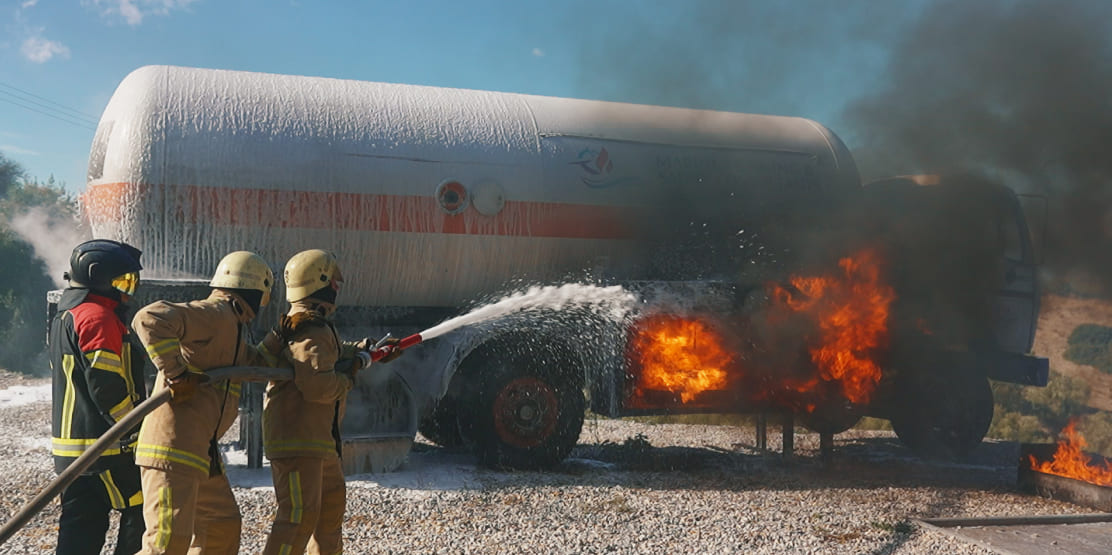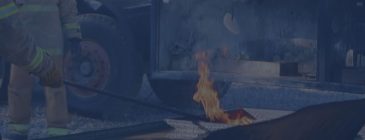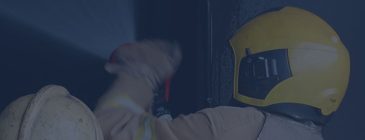DOP has been designed based on STCW A-VI/3 requirements. It was initially developed to solve problems faced by the shipping companies due to poor firefighting drills exaction like, ship detention imposed by PSC and poor compliance with TMSA 3 requirements.
Course
Objectives
At the completion of this course participating trainees will:
- be able to organize and train fire parties
- be able to conduct effective fire drills under truly realistic conditions
- be able to ensure the prompt and effective implementation of emergency plans and procedures
- realize the importance of applying effective command & control tactics
Course
Theory
- Principles of Firefighting organization emphasizing on the detailed design, preparation and execution of realistic accommodation, E/R and other service spaces fire drills. The role of each team. The On Scene Commander. Thr Staging Area.
- The importance of sound command & control and good communication during emergencies.
- Methods of implementing the Fire Plan in, various accommodation E/R and other service spaces, fire cases. The drills implemented during practice, on the 2nd and 3rd day, are planned and analyzed, so that the trained officers can use this knowledge and experience in order to conduct drills on-board on their ships applying sound tactics and command.
- Various scenarios of accommodation fire are given, and each trainee is asked to present his plan of action of the Fire Fighting of a ship which is projected on the screen. All trainees are encouraged to discuss the suggested plan and present their arguments. Final analysis of action suggested.
Course
Practice
PART A
Breathing Apparatus practical exercises are conducted with emphasis on donning procedure entry control and the role of BA Controller.
Internal Accommodation Fires
- Fire Drills: The emergency teams must tackle an actual live accommodation fire inside an enclosed space under high temperature and dense smoke.
- When boundary cooling is satisfactory, trainees wearing heavy fire fighting suit and donning BA, open the door, enter into the compartment to firefight using water hoses.
PART B
Based on PART A experience, training is continued as follows:
Attendants (officers) organized into the ship’s Emergency Response Organization (usually consisted of emergency and support team and ON Scene Commander), are called to face a variety of scenarios simulating emergency situations e.g. fire in accommodation, rescue from enclosed space with simulated fire etc.
During these drills extensive use of actual firefighting equipment is made e.g. SCBA apparatus, fireman’s outfit, VHF radio, fire hoses under pressure, etc. Special attention is paid to the importance of radio communication between the team and the on-scene commander.
The drills are conducted in a building constructed specially for smoke and fire drills according to specifications exceeding those of IMO (IMO Model course 2.03, Advanced Training in Fire Fighting).
The space is subdivided in various compartments causing to trainees’ loss of their orientation. There is access between upper and lower container and the “upper deck” by a vertical ladder. On the floor, various traps exist, pumps, electrical motor, etc.
A Smoke Generator, producing 450 cubic meters harmless smoke per minute, is used to simulate fire conditions. The compartments are filled with dense smoke and all trainees, wearing breathing apparatus enter and perform search and rescue or fire fighting in conditions of practically zero visibility. A hidden flashing light simulates the fire.
During the drills the team must tackle unexpected, quickly changing circumstances, intentionally created by the trainer. The difficulty is increased gradually from one scenario to another. This helps the On Scene Commander to develop good commanding skills.
Different scenarios of various levels of difficulty are organized and implemented in turn by the senior attendees acting as trainers. On completion of each scenario a debriefing takes place.
Finally, analysis of observed faults, deficiencies, success and improvements are discussed.

Course
Participants
For DOP course to run successfully a minimum number of 10 participants is necessary. The reason is that the core of this training is practical exercises, implemented on specialized installations – constructions, where under realistic conditions trainees carry out all necessary duties and alternately, acting as leaders of various teams learn to organize and execute drills. This roleplaying procedure requires a minimum number of 10 trainees in order to run an effective DOP course.
It is understandable that shipping companies may not be able to train this number of officers at the same time. If such case exists, we can combine participation of two or more companies. Booking of at least 4 trainees is required at least two weeks prior to the course start date. One week before the course date we confirm the course implementation, which means that a minimum of 10 trainees, from different companies, has been booked.





